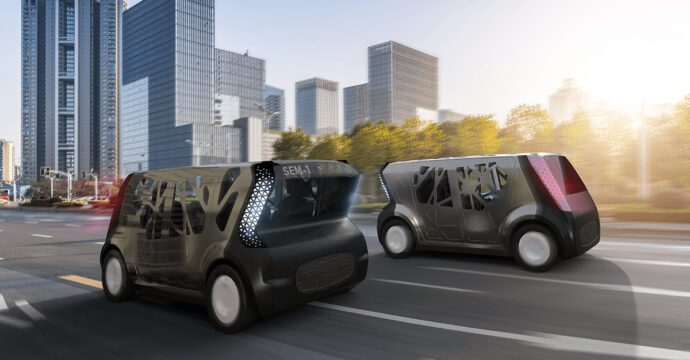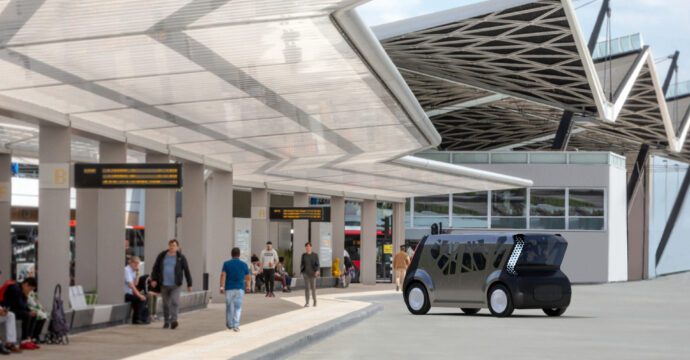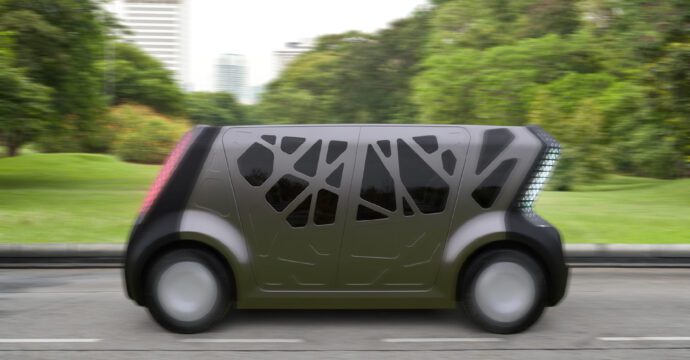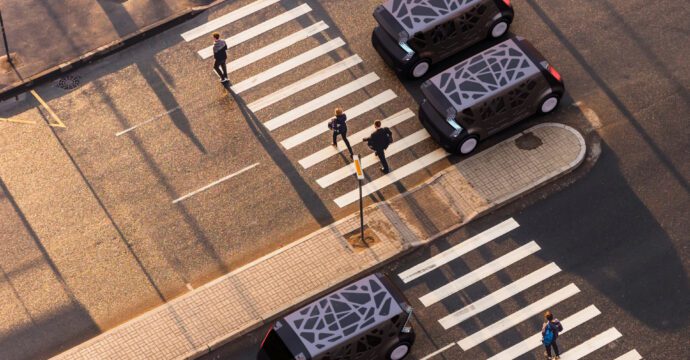Kate Hickey, WorldAutoSteel
(WorldAutoSteel is the automotive group of the World Steel Association)
11 May 2022
The Steel E-Motive project, a collaboration between WorldAutoSteel and Ricardo, demonstrates the suitability of the latest advanced high-strength steel (AHSS) grades for use in fully autonomous electric vehicles, engineered for a mobility as a service (MaaS) transport model.
WorldAutoSteel steel experts and Ricardo’s engineering and environmental experts are working together to develop two vehicle concepts: a smaller four-passenger “SEM1” variant is intended for inner-city journeys and a larger six-passenger variant (SEM2) intended for longer inter-city journeys.

The Steel E-Motive programme is working to develop two vehicle concepts for MaaS applications.
The AHSS steel concepts are expected to be finalised in early 2023 and will serve as the basis for car manufacturers in their quest to design sustainable autonomous electric vehicles using AHSS as their material of choice.
Autonomous vehicles operating in a ride sharing MaaS model alongside other public transport will help meet the challenge of serving a growing global population, while providing a sustainable transport solution around and between cities.
With ride sharing, the number of single-passenger vehicles on the road drops, reducing traffic congestion, leading to an increase in capacity for passenger numbers and journeys.
Steel E-Motive will provide a very efficient example of AHSS capabilities to meet this new vehicle segment demand with options that will encourage users with safe, affordable transportation.

MaaS vehicles can bridge the gap in urban commuting, providing services such as last-mile transport or filling a need in transportation deserts.
Addressing the environmental transport challenges in future towns and cities
Both the smaller SEM1 and larger SEM2 Steel E-Motive vehicles are ‘all electric’ with zero tailpipe emissions that will help cut urban pollution. The aim is that the electricity source used for charging will be largely renewable (e.g., wind, solar).
In addition, the vehicles are being designed to be as environmentally friendly as possible during their total life cycles.
The Steel E-Motive vehicles are engineered to minimise greenhouse gas emissions created during vehicle manufacture, achieving more efficient use per part, meaning less overall steel production. This will reduce the greenhouse gas emissions generated during the vehicle’s lifetime, from manufacture to end-of-life recycling.
Steel is made in a more environmentally friendly way than many other automotive structural materials, with fewer greenhouse gas emissions.
Steel production’s low life-cycle emissions contributes significantly to reducing vehicle total life cycle emissions. See WorldAutoSteel’s Vehicle Emissions Impact Indicator to learn more.

Steel E-Motive is designed to provide comfortable, accessible transportation that is environmentally responsible and safe.
Addressing vehicle safety
In the early stages of roll out, autonomous vehicles are expected to operate in a ‘mixed mode’ alongside owner-driven vehicles. This means that there is still a risk of high-speed vehicle-to-vehicle or vehicle-to-obstacle collision.
To address this, the Steel E-Motive vehicles are engineered to meet high-speed international crash test standards, such as the European and US NCAP requirements, leveraging the steel industry’s AHSS portfolio to meet stringent vehicle safety targets, while delivering optimal mass, cost and comfort.

The Steel E-Motive vehicle is designed to reduce road traffic accidents and fatalities and meet crash requirements to keep passengers safe in mixed-mode situations.
Addressing passengers’ needs
The Steel E-Motive vehicles have been engineered with future users’ needs in mind. The AHSS body structures are designed to reduce noise and vibration, so that the journey is more comfortable.
A flat interior floor with an accessible ‘step-in height’ and a wide entry door aperture accommodate ride hailing in a busy urban environment. Both vehicles feature four-wheel steering, with a generous turning circle, enabling the vehicles to operate in confined spaces, making it easier to hail and access the vehicles in crowded areas.
Steel E-Motive will provide a roadmap for steel-intensive MaaS vehicles that will contribute to the global drive for safer and sustainable mobility. Learn more about the Steel E-Motive design via this video or here.
If you have any thoughts or questions, please do not hesitate to contact me by adding a comment.